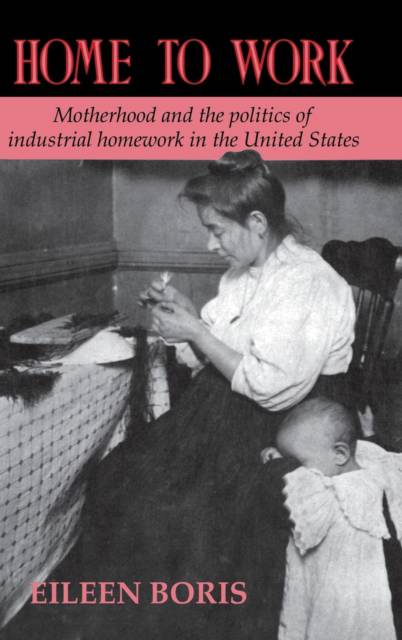
- Afhalen na 1 uur in een winkel met voorraad
- Gratis thuislevering in België vanaf € 30
- Ruim aanbod met 7 miljoen producten
- Afhalen na 1 uur in een winkel met voorraad
- Gratis thuislevering in België vanaf € 30
- Ruim aanbod met 7 miljoen producten
Zoeken
Home to Work
Motherhood and the Politics of Industrial Homework in the United States
Eileen Boris
Hardcover | Engels
€ 194,95
+ 389 punten
Uitvoering
Omschrijving
In the minds of most people, the home has stood apart from the world of work. Bringing the factory or office into the home challenges this division. From the 1870s, when New York cigarmakers attempted to end tenement competition, to New Deal prohibitions in the 1930s, gender ideologies shaped the battle over homework. But by the 1980s, the middle-class mother at the keyboard replaced the victimized immigrant as the symbol of homework. Home to Work restores the voices of homeworking women to the century-long debate over their labor. The book also provides a historical context to the Reaganite lifting of New Deal bans. Where once men's right to contract precluded regulation, now women's right to employment undermined prohibition. Whether empowerment comes from rights to homework or rights as workers depends on whether homeworkers become visible as workers who happen to mother.
Specificaties
Betrokkenen
- Auteur(s):
- Uitgeverij:
Inhoud
- Aantal bladzijden:
- 404
- Taal:
- Engels
Eigenschappen
- Productcode (EAN):
- 9780521443708
- Verschijningsdatum:
- 27/05/1994
- Uitvoering:
- Hardcover
- Formaat:
- Genaaid
- Afmetingen:
- 155 mm x 231 mm
- Gewicht:
- 680 g

Alleen bij Standaard Boekhandel
+ 389 punten op je klantenkaart van Standaard Boekhandel
Beoordelingen
We publiceren alleen reviews die voldoen aan de voorwaarden voor reviews. Bekijk onze voorwaarden voor reviews.











